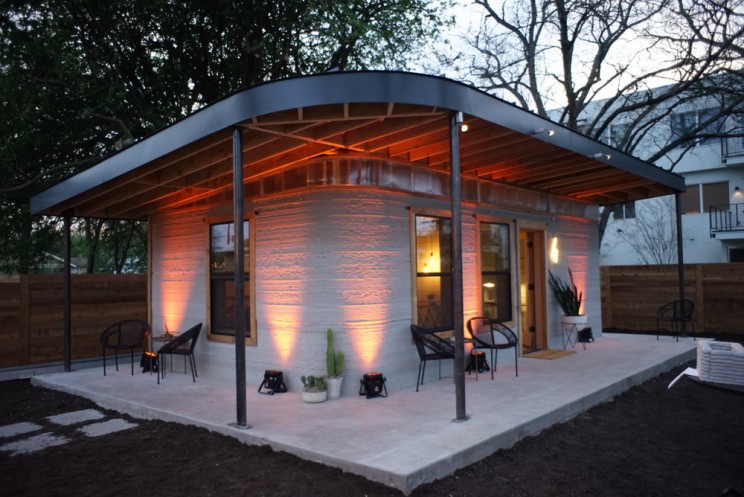
3D printing has been the talking point for quite some time and now, the construction industry is taking full advantage. Additive manufacturing is fast becoming a great asset across various sectors and thanks to new technology, 3D printed houses are a real possibility. How about building a house in just one day?
We see the benefits of 3D printing in the manufacturing, medical and the fashion industry from prototype to production. With construction in mind and large-scale 3d printers, it is now possible to think about bigger projects. It goes without saying that additive manufacturing is ideal for creating models especially in architecture where models are rendered prior to construction.
Building A House In Less Than A Day
ICON, a start-up company in Texas, will be mass producing small homes using 3D printing technology. Partnered with non-profit, New Story, ICON aims to provide sustainable and quality homes accessible to everyone. A report from the World Resources Institute estimates that 1.2 billion people currently live in cities around the world without affordable or secure housing. ICON and New Story have plans to build a community of 100 3D-printed homes in El Salvador next year.
The current cost of building a 3D printed single story home, using their industrial-sized Vulcan printer, is around $10,000. It’s already considerably less than the average American home and they’re working at reducing it even further to $4,000. According to ICON, the process only takes 12 to 24 hours and could construct a 650-square-foot cement house in one day.
Although the Vulcan 3D printer is massive, it’s still portable and produces a custom blend of concrete that hardens as it prints. The printer lays out the concrete in 100 strands, each about one inch thick that retains their shape as they harden. The strength of the printed walls are reportedly stronger than cinderblocks after a few days of hardening and the house is completely habitable once it’s set up.
ICON also wants to develop robots that could automatically install the windows and drones to spray paint the exterior walls. One last piece to the puzzle is printing roofs but the technology for suspending concrete as it prints is not yet feasible.
3D Printing In Construction
Civil engineers should be delighted as 3D printing is now a new tool, or should we say toy. In fact, several successful 3D printed projects including bridges, urban structures and houses. Additive manufacturing technology also offers various possibilities. A 3D printed house is made on-site or each part constructed at different locations. From there, the parts are transported to a central location and assembled.
Most large-scale 3D printers used to create houses have automated arms capable of printing really big structures. The robotic arm deposits material to print the architectural designs directly in one part. These 3D printers can use different materials that makes sustainable housing a very attractive draw card. Concrete 3D printing in construction is more recent than metal or plastic. Until now, the technology has not been advanced enough and machines unable to make large structures on an architectural scale.
Advantages of 3D Printing
One advantage of additive manufacturing is that you can modify your model and the design as often as you like. Automated construction also saves time and cost as machines work non-stop with extreme accuracy. This makes it ideal for building homes fast after a natural disaster in particular.
Provided construction companies adhere to building codes in an area, large-scale additive manufacturing means they can build almost anywhere. This is particularly valuable when building homes in remote areas as there are fewer machines, tools and materials to transport.
What are your thoughts on building houses with 3D printers, robots and drones? How do you think this will impact employment in the construction sector? Please share your comments in the section below or find us on Twitter, Facebook, YouTube, Google+ or LinkedIn and use our new hashtag #PRVtech and let’s start a conversation.
We specialise in various industries including construction, structural and architectural steelwork, site work installation and maintenance, among others. Get in touch if you have any questions about PRV Engineering or if you need assistance with your engineering project.
This site uses Akismet to reduce spam. Learn how your comment data is processed.


 Mail:
Mail: 




Leave a Comments